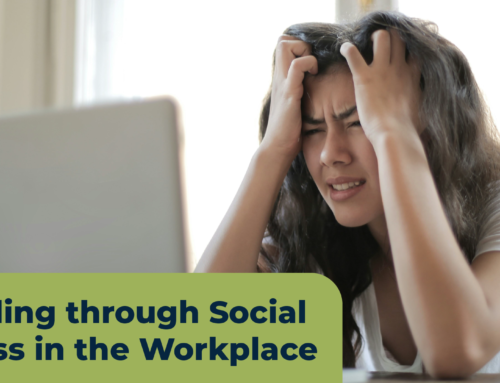Today, 1 in 5 employees are doing double duty by providing care for a loved one, with women taking on the responsibility most often.1 Many spend an average of 20 unpaid hours a week providing hands-on care for children, aging parents, and adults with disabilities on top of the time they spend at work.2
The impact on businesses in the U.S. is significant. Caregiving can cost employers $6,410 per employee, per year in productivity loss — and employees who are caregivers miss an average of 3.2 workdays per month.3 Furthermore, nearly one-third have voluntarily left a job because of their caregiving responsibilities.4
Businesses can experience an average productivity
loss of $6,410 per caregiving employee 5
Understanding how caregiving impacts your employees
As the need for caregiving grows, workplaces that recognize and prepare for it can help employees navigate their dual roles effectively.
Employers can take steps to cultivate workplaces where caregivers feel better supported to balance their responsibilities at work and at home. Some companies started to do this during the pandemic when caregivers’ need for more flexibility became more obvious. Now it’s time for more employers to act — or face the reality of a shrinking talent pool, decreased productivity, and a disengaged workforce.

Intergenerational caregiving
The caregiver experience may soon be the norm among working adults. The “sandwich generation” — people caring for children and older adults at the same time — already represent a large portion of the workforce. About 23% of U.S. adults are sandwich-generation caregivers juggling parenthood and eldercare.6
Caregiving is impacting younger generations too. About 1 in 4 millennials are caregivers. And together with Gen Z, they make up 60% of first-time caregivers.7 These numbers will no doubt swell alongside the expanding population of older adults, which is projected to nearly double to 95 million by 2060.8
Amidst the ongoing labor shortage, the issue becomes even more pronounced. At least 6.6 million people who aren’t working say it’s because they need to care for someone else.9 But at the same time, these are people who want and need to be working — and they’re looking for workplaces that actively support their needs as caregivers.
Caregiving costs employers money and top talent
Women who are caregivers also pay a serious economic cost for caregiving in the form of limiting work hours, turning down job promotions, loss of benefits, and pausing work or even retiring early. When you consider lifetime earnings, the opportunity cost of interrupting a career to assume full-time caregiving duties may be as high as 3 or 4 times a person’s potential annual salary.10
It’s no wonder then that women of every age are placing a premium on equitable, supportive, inclusive, and flexible workplaces — and switching jobs at higher rates than ever.11 Young women are particularly ambitious and place an even greater premium on these values.
Leading-edge companies know this and reap the benefits. Almost 70% of women in highly flexible work arrangements say they plan to stay with their company for more than 3 years, compared to only 19% of women who have no flexibility.12 Companies that don’t offer flexibility miss out on a retention play.
Putting off preventive care leads to health issues
Between caregiving and managing work, caregivers are left with little time to care for themselves. Caregivers tend to neglect their own health.
A poll showed that 45% of women — who are responsible for the majority of caregiving tasks — went without preventive screenings, checkups, or vaccines in the past 12 months, with limited time to schedule appointments being one of the top reasons.13 In addition, almost 2 out of 5 caregivers have 2 or more chronic conditions.14
Neglecting preventive care puts caregivers at increased risk for disease and can exacerbate existing conditions. Uncontrolled hypertension, for example, can lead to heart disease and stroke, while missed mammograms may delay cancer diagnosis. This puts their health at risk and costs employers more.

Promoting psychological safety and flexibility at work
So how can employers support caregivers and help them thrive? While one company alone can’t solve broader societal issues, it can meaningfully evolve its own workplace policies and attitudes to ensure equity.
- Build a culture of psychological safety. A workplace where employees see leaders who look like themselves and feel comfortable speaking up without being judged is better equipped to understand and address women’s needs when it comes to health and caregiving.
- Offer flexible work arrangements. Promote a culture that supports work-life balance by establishing guidelines for flexible work arrangements, such as preventive care and caregiving, and training managers to give employees more input, predictability, and flexibility.
- Offer comprehensive benefits. Extend wellness programs that break through the stigma around common experiences women face to support their well-being, including family leave, breastfeeding accommodations, and benefits to support menses and menopause.
- Commit to inclusion. Support and encourage the creation of employee resource groups focused on the unique needs of parents and family caregivers to give these employees a platform to discuss concerns, share experiences, and suggest improvements. Conduct anti-discrimination training to educate employees about discrimination and bias, and ensure that all caregivers have equal opportunities.
 Choosing the right health care partner is crucial
Choosing the right health care partner is crucial
Health care is most effective when it’s holistic
Having access to coordinated care that brings together professionals from different specialties to address all aspects of a person’s health is another real advantage. A pediatrician might pick up on signals of a mother’s postpartum depression and reconnect her back to her obstetrician or a mental health professional. Or while getting an eye screening, a patient might be referred to a diabetes specialist, or get a flu shot before heading home. In other words, caregivers can get help focusing on their own needs even as they’re caring for loved ones.
Virtual care offers a considerable advantage
Being able to consult with doctors and specialists virtually means caregiving employees can take care of health conditions quickly and easily, alleviating cumbersome logistics — and delays in care that could lead to more serious complications down the line.
Supporting caregivers is a workforce health essential
Going forward, employers who are attuned to — and proactive about — the emerging needs of caregiving employees will have a competitive advantage. These shifts that are happening are not a passing phenomenon, but a societal truth. More employees will become unpaid caregivers over time — and as smart businesses adapt to this new normal, supporting caregiving will become a workforce health imperative for smart business leaders everywhere.
Championing Women’s Wellness in the Workplace
Women should be empowered to put their health first. Discover how you can help lead the change by downloading our interactive guide that explores the connection between women’s health and their career.
1Katy McGuinness, “One in Five U.S. Employees Serves as an Unpaid Caregiver,” The Hill, July 7, 2023.
2See note 1.
3Debra Lerner, MSc, PhD, “Invisible Overtime: What Employers Need to Know About Caregivers,” Rosalynn Carter Institute for Caregivers, January 2022.
4See note 3.
5See note 3.
6Juliana Menasce Horowitz, “More than Half of Americans in Their 40s are ‘Sandwiched’ Between an Aging Parent and Their Own Children,” Pew Research Center, April 8, 2022.
7Jo Ann Jenkins, “Millennials and Caregiving? Yes, it’s a Thing,” AARP, May 29, 2018; Jaeah Lee, “The Agony of Putting Your Life on Hold to Care for Your Parents,” The New York Times, March 28, 2023.
8Jonathan Vespa et al., “Demographic Turning Points for the United States: Population Projections for 2020 to 2060,” U.S. Census Bureau, February 2020.
9Abha Bhattarai, “Caring for Aging Parents, Sick Spouses is Keeping Millions Out of Work,” The Washington Post, April 4, 2022.
10Christian González-Rivera, “The Caregiving Crisis,” Center for Workforce Inclusion, September 21, 2021.
11Emily Field et al., “Women in the Workplace 2023,” McKinsey & Company, October 5, 2023.
12“Deloitte’s Women at Work Report Reveals Signs of Progress But Much Work Remains,” Deloitte, April 26, 2023.
13“New Ipsos Survey Reveals Nearly Half of American Women Forgo Preventive Care Services,” Alliance for Women’s Health & Prevention, January 31, 2023.
14“Supporting Caregivers,” cdc.gov, accessed January 11, 2024.
15See note 13.
16See note 14.






